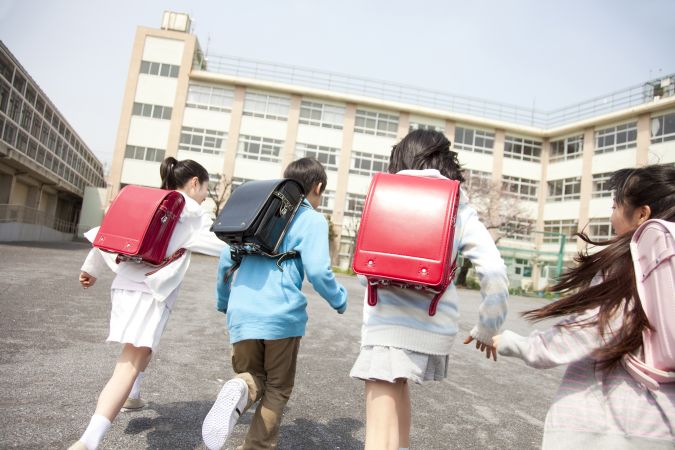
April 1, 2021
Forming the ‘Perfect Citizen’
The differences in the Japanese and American educational systems
Schools are the primary sites where cultural values are instilled in the young minds of students. These minds are not only learning the core academic subjects but also how to interact with others and develop the values that constitute good citizenship. But what are some of the differences in how students are socialized in the U.S. and Japan? And how does this shape each society’s future?
Extracurricular activities
Instructional practices and extracurricular activities are big factors in both countries. The Japanese entrance examination system introduces students to the necessity of perseverance (gambari) for success in the educational system and corporate world. At the same time, students learn how to be well-rounded individuals through their participation in extracurricular activities.
These activities are almost compulsory, so most students return home late in the afternoon. Participation in clubs and athletics teaches students how to navigate the sempai–kohai (senior and junior) hierarchical system which influences interdependent interpersonal relationships in Japan. The expectation that everyone participate in these activities reflects how collectivism and social obligations shape Japanese culture.

What’s school life like in Japan?
School Rules: Is conformity law for students in Japan?
An Individual Story: Individuality in the nation of homogeneity
Female Managers or Managing Females? Japan’s high school student baseball coaches
The American educational system is not so focused on examination preparation, but standardized testing is a reality in public schools. Most states adopt a set of learning standards that teachers are expected to teach because students’ academic performance is measured by them. The Common Core Standards were developed with the goal of ensuring students are academically prepared for college. While classroom teachers spend a considerable amount of time preparing for exams in the core subjects, test preparation is not the heart of the educational system.
American education places considerable emphasis on project-based and experiential learning as well as developing writing and speaking skills. Like in Japan, extracurricular activities are a vital component of school life. Particularly at the high school level, athletic and performing arts events are significant occasions where members of the school community socialize and celebrate extracurricular achievements.
Many students participate in sports or clubs, but participation is not compulsory. The non-compulsory nature of participation reflects the importance of individualism and personal choice in the U.S.
Moral education
Moral education is another area where the Japanese and U.S. systems diverge. Although moral education is a course in Japanese schools, it is absent from the American curriculum. Students’ formation as good citizens is reinforced through the school lunch program (gakko kyushoku) and cleaning duty after school.
The classroom is a place where students form a community of learners that is strengthened by practicing communal eating and maintaining a clean environment. Students rotate the responsibilities associated with serving food and cleaning up. They eat nutritious food while they communicate with their peers and teachers.
These practices also reinforce group consciousness (shudan ishiki) because students learn to cooperate and eat the same meal as their peeps, regardless of personal food preferences. The practical component of moral education is conducted through these specific practices that are woven into the social fabric of the school.
Social and emotional learning
Social and emotional learning, as well as mission statements are the closest equivalents to “moral education” classes. A mission statement or vision typically focuses on fostering academic excellence, personal responsibility and ethical citizenship. Some districts identify “portrait of a graduate skills” that graduates acquire, like the ability to communicate, collaborate, think critically, achieve goals and develop resilience. The absence of moral education from the curriculum is due to the difficulty of defining a shared moral code in a diverse society.
There has been an increased focus on integrating social and emotional learning (SEL) into the curriculum to ensure that students are also learning how to interact with others. According to Katrina Schwartz, social and emotional learning teaches students “how to interact with one another in positive ways, deal with anger, and solve problems.”
SEL is often taught explicitly through lessons about managing emotions and eliminating bullying and reinforced by teachers modeling appropriate social behavior to their students. Like moral education, SEL helps students develop the social skills and character that defines good citizenship.

Crafting society
Examining the educational systems in Japan and the U.S. provides a window into how schools play a vital role in the formation of good citizens. Japanese students inculcate the culture values of cooperation (kyoryoku), group awareness (shudan ishiki), patience (ganman) and an implicit communication style. Decisions and actions are always governed by how they will impact members of groups they belong to. On the other hand, American schools foster students’ awareness of collaboration, explicit communication, self-awareness and self-expression.
Even though students are socialized in an individualistic culture, their involvement in SEL, collaborative group work and extracurricular activities teaches them to exercise self-control and become positive contributors to the school community and beyond. Students in both countries eventually become future citizens who learn how to occupy a position within a collective group or express their individuality within interpersonal relationships.







